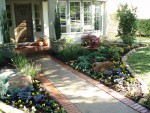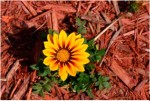
You know they say that the grass is always greener on the other side of the fence, but this summer, why not keep the grass greener on your side of the fence? Summer brings about warm weather and longer days which is great for outdoor activities. However, the warm days of summer can have a significant impact on your lawn. These few, quick tips could help you keep your lawn healthy all summer.
How often do you need to water?
One of the biggest issues your lawn might face during the summer is the drought. To keep your lawn healthy and green, you need to water it frequently. Generally lawns need at least one inch of water per week to stay in good shape.
Here is what you should do:
- Water deeply and leave a reasonable time interval to allow the grass to develop drought-resistant roots. Be careful though! Some homeowners wait till the lawn gets brown and dormant and then try to water it back to life. This does not help! If you are not able to water your lawn regularly during summer, you can just leave it. Usually the lawn recovers when the weather changes.
- Water your lawn during less warm hours preferably early in the morning. This allows the soil to absorb all the water and the all the moisture.
How often should you mow your lawn during summer?
To allow your grass to develop deeper roots, you should set your mower’s blades as high as possible. Taller grass is more drought-resistant and helps provide shade for the surrounding soil to maintain moisture for longer periods.
You should keep your mower blades sharp to avoid tearing and beating the grass and reducing stress during warm temperatures.
Weeding:
During summer most weeds bloom and disperse their seeds. It is vital to remove the weeds before they bloom to avoid dealing them in the next season. The good news is that it’s easier to fight weeds during summer than in colder weather.
Additional tips:
- Did you know that you can use a small straight-sided can to gauge the amount of water that received during irrigation?
- The best time of the year to fertilize your grass is at the beginning of spring and at the end of the fall.
- Applying products like fertilizers and herbicides during summer can damage your grass, contact your local landscaper before attempting to apply any products on your lawn during summer.
If you would like more tips about how to take care of your lawn during this summer for your specific location check out our blog give us a call at 817 457 7507.






